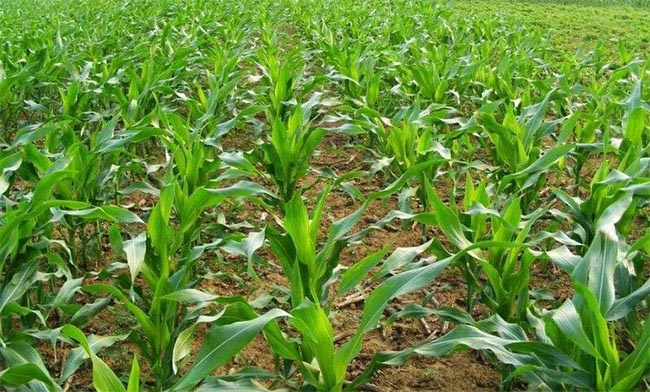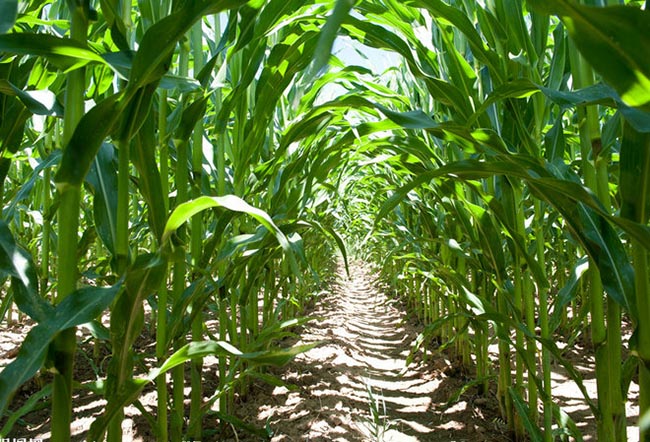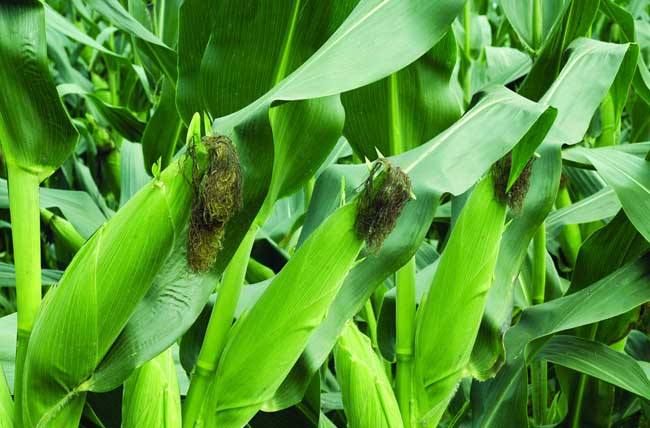Main Points of Fertilization Management for Maize Jointing and Heading
VIEWS: times Release Date:2021-04-08
When corn begins to joint, it enters a period of rapid growth and development, and begins to undergo ear differentiation, which is the period of strong differentiation and formation of male and female ear reproductive organs. Maize jointing to heading stage is the stage where vegetative growth and reproductive growth go hand in hand. The roots, stems and leaves grow vigorously, and the male and female ears are successively eared and differentiated. The jointing and heading period is the most important period in the maize life cycle, which is related to the later yield.

This period is the most vigorous growth and development stage in the life of corn. Special attention should be paid to field management at this stage. Scientific management and reasonable topdressing of fertilizers should be done to lay the foundation for high yield.
01 Corn jointing stage management

Timely top dressing
In the jointing stage of corn, combined with rainfall and irrigation, topdressing is applied in time, and topdressing fertilizer is applied at the stage of jointing to the end of booting to promote ear development and floret differentiation, and increase the number of grains. Nitrogen topdressing is the main fertilizer, and the combined irrigation head water of field furrow irrigation is applied with deep topdressing by mechanical strips. Generally, 15-20 kg of urea or HAOFANGZI, YANGJIA compound fertilizer (28-4-5) 10 kg per mu is applied. For drip irrigation, 6-8 kg of urea and 1 kg of potassium dihydrogen phosphate per mu can be applied in combination with irrigation head water. The specific fertilization index is determined according to the growth of corn, soil fertility and weather conditions. Applying top dressing in the rainy season or with watering can improve fertilizer efficiency. When applying fertilizer, the chemical fertilizer should not be too close to the corn roots. After applying the soil, covering the soil can reduce the loss of fertilizer efficiency.
Watering
After the jointing of the corn plant, the growth enters a vigorous stage. In addition, the temperature continues to rise during this period, and the leaf surface transpiration is strong. The water requirement of corn is relatively high, accounting for about 30% of the total water demand. There must be sufficient water during the corn bell-mouth period to keep the surface wet and not dry, so as to meet the needs of corn in the jointing period, and the field water holding capacity should be kept at about 70%. Where there are irrigation conditions, water should be watered in time to fight drought.
Reasonable cultivating, removing weeds
Reasonable cultivating can effectively remove weeds, increase ground temperature, and promote plant growth. Cultivation in drought can destroy the surface capillaries, prevent the evaporation of water in the lower layer of the ground, prevent drought and protect moisture; Cultivation after rain can break the compacted soil, accelerate the evaporation of water, and prevent waterlogging. Cultivation in summer should not be too deep, but 5 cm is appropriate to avoid root damage. For corn fields with more serious weeds, chemical weeding, directional spray weeding, and spraying, spray nozzles should be equipped with protective covers to prevent the drift of the chemical solution from damaging the corn leaves and surrounding crops.
Timely drainage and irrigation
After heavy rain, if there is waterlogging in the field or waterlogging in the field after irrigation, it must be drained in time, otherwise the root respiration will be blocked, and the root growth and development will be restricted, which will eventually affect the differentiation of male and female, resulting in small ears or empty stems. Therefore, waterlogging should be drained in time to prevent the premature aging of corn roots from affecting yield.
Boost
Sometimes due to drought, too deep sowing, low temperature in the early stage, insufficient base fertilizer, etc., normal growth and development are affected, and yellow seedlings, weak vegetative bodies, and slender stalks appear, eventually forming spikelets, empty stalks, and bald tips, which affect the yield. Consider promoting. The way to promote growth is generally early topdressing and early irrigation, combined with topdressing and irrigation at the same time to spray foliar fertilizer.
Remove ineffective spikes
Remove the unripe spikelets from the double ears as early as possible to ensure one plant per ear. This can reduce nutrient consumption and concentrate nutrients for the main ear, as well as promote early maturity.
02 Corn ear stage management

Uprooting small plants
For plots where precision seeding is implemented, the links of thinning and setting seedlings are omitted, and production costs are reduced, but small, weak, and diseased plants are prone to appear in the field. The plant usually has no ears or very small ears. It not only occupies a certain space, consumes fertilizer and water, affects the growth of healthy plants, but also easily causes sheltering and lodging in wind and rain. Therefore, it should be removed as soon as possible to reduce nutrient consumption and improve group tidiness. degree.
Scientific top dressing
The ear stage of corn is the period of both vegetative growth and reproductive growth, during which the absorption rate and quantity of nutrients increase rapidly. All plots without base fertilizer or insufficient base fertilizer or no seedling fertilizer should be topdressed at the ear stage of corn. The best time for top dressing should be around the big bell mouth period. If the weather is dry, it can be combined with watering. Ditch and apply deeply at a distance of about 10 cm from the plant, with a depth of about 10 cm.
Chemical control and fall prevention
When the 7th to 11th leaves of maize are unfolded, spraying chemical control agents on the leaves can effectively shorten the length of 1 to 3 internodes at the base and increase the number of aerial root layers to prevent lodging and increase yield. Of course, chemical control should be flexibly determined according to factors such as corn plant height, population density, rain size, etc. For plots with higher plant height, higher density, overgrowth, and greater risk of lodging, the leaf stage of maize should be expanded from 7 to 11 Spray chemical control agents to prevent lodging. For fields with reasonable density and normal growth, chemical control agents may not be used.
One prevention and double reduction
Diseases at the ear stage of corn mainly include large leaf spot, small leaf spot and smut, and main pests include corn borer and armyworm. "One prevention and double reduction" is a green and economical new technology currently promoted in the prevention and control of corn diseases and insect pests. This technology refers to the general application of medicines (fungicides and insecticides) during the corn bell-mouth period, which can control a variety of corn diseases and insect pests in the middle and late stages, reduce the base number of ear insects in the later stage, and reduce the prevalence of diseases. At this time, spraying insecticide, bactericidal compound or mixed agents can simultaneously treat and prevent a variety of diseases and insects, reduce the damage in the later stage, protect the normal growth of corn plants, improve the photosynthetic efficiency of the leaves, and realize the increase and efficiency of corn production.
Drought prevention and drainage
The corn bell mouth period and the tasseling and silking period are critical periods of water demand. In the event of a drought, water should be timely, especially to prevent the "pinched neck drought" during the tasseling period. If there is a lot of rainfall during the corn ear stage, and the rainfall is heavy, the ditches in the field and the field must be cleared as soon as possible to ensure smooth drainage. In case of continuous rain or heavy rain, which causes accumulated water in the field, it should be drained as soon as possible to ensure the normal growth of corn.
Previous : Which fertilizer is best for pumpkin?
Next : Complete Fertilization Techniques for Passion Fruit
Latest News
- The company overcame difficulties and won a "good start" in the first quarter ...2022-03-28
- Safe Production ...2022-03-28
- first-line collection ...2022-03-26
- Huaqiang News ...2022-03-26
- Huaqiang Chemical Strong Agriculture Project ...2022-03-25
- huaqiang news ...2022-03-24
- winning unit ...2022-03-22
- Huaqiang News ...2022-03-21
Related Information
- 2,200 tons of NPK 23-10-5+6s+1zn fertilizer sent to Africa ...2021-01-03
- The best fertilizers for fruits and crops ...2020-05-26
- Humic Acid Fertilizer ...2019-12-31
- Bulk Blending Fertilizer ...2019-12-27
- Water Soluble Fertilizer ...2019-12-08
- NPK Fertilizer ...2019-12-02
- Potassium Sulfate Fertilizer ...2019-11-30
- Urea Fertilizer ...2019-11-21
MESSAGE
Our sales staff will be the first time to get in touch with you,to provide you with the latest price.
-
Chemical Products
-
Compound fertilizer
-
Contact Us
Huaqiang Chemical Group Stock Co.,Ltd.
No.1 Jinping Avenue, Dangyang , Hubei , China
Http://www.hq-chemical.com
info@hq-chemical.com
Tel:+86 717 3431866
Mobile: +86 18627120543
© Copyright 2021 Huaqiang Chemical Group Stock Co.,Ltd. All Rights Reserved



